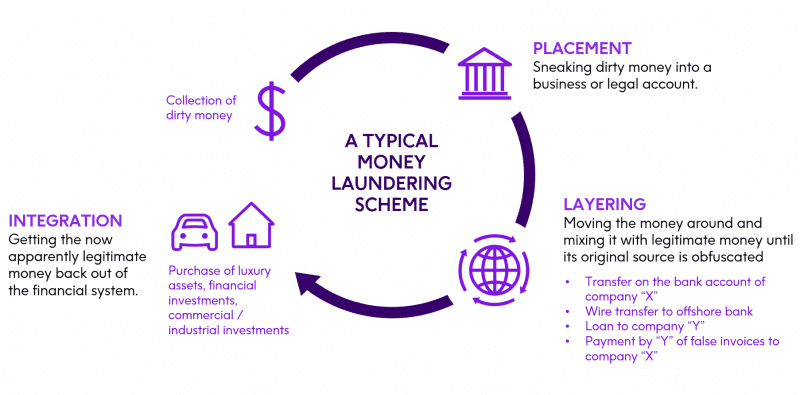Industry Solutions
Financial services data solutions
Fueling stronger financial services with trusted data. Better understand customers and improve experiences, fight financial crimes, reduce compliance risks, optimize branch performance, and stay ahead of your competition
 |
Financial Services |
- Deliver targeted, timely offers based on deep customer insights
- Make smarter branch transformation decisions
- Manage risk and comply with complex regulations
- Turn fragmented communications into unified customer experiences
Our financial services solutions include:
![]()
Entity Resolution Fraud
![]()
Data Governance
![]()
Location Analytics
![]()
Data Enrichment
![]()
Geo Addressing
![]()
Customer 360
Creating new opportunities and tackling old challenges
In financial services, data is power. It drives you to hit growth and revenue targets, comply with tight regulations, optimize branch transformation opportunities, and much more. With surging customer demand for personalized, tailored experiences via robust digital channels, it’s never been more crucial to spotlight your data management and analytics to make sure you’re getting the richest potential from the information at hand.
Leading the pack are companies adopting strong financial data solutions at a break-neck pace, leveraging them to automate and accelerate confident decision-making, and create new value with targeted, timely offers.
All the while, the historically consistent challenge of managing risk around increasingly complex compliance regulations and financial crimes remains top of mind. With so many high-stake priorities to manage, financial services data needs to be accurate, consistent, and contextualized: it needs to have data integrity.
Data integrity is built on enterprise-wide data integration, location intelligence, data enrichment and data governance tightly linked with data quality. And your data integrity journey requires best-in-class financial data solutions, when and where you need them.
After all, your data is only as strong as your ability to trust it.

Knowing your customer requires insight into the customer lifecycle, quickly connecting customer data across your organization, and understanding the context in which they are engaging.
In most cases, financial services data isn’t lacking in quantity – it’s the quality and completeness of the data that can cause very damaging, expensive headaches.
While customer information files (CIF) have previously been relied on to connect data across an organization, end users still need to put in manual effort to keep up with customer data that’s constantly changing – this type of data management often results in incorrect, incomplete information. As they age, CIFs can become less effective, and simply aren’t designed in a way that effectively integrates them with existing core bank processes.
This leaves you with an incomplete view of your customer, the consequences of which trickle into your marketing, operations, and data analytics across all channels – as well as regulation, risk management, and underwriting.
The solution boils down to a single, comprehensive 360° view. Harnessing a powerful combination of robust data quality addressing capabilities and graph-database technologies means that the days of error-prone multi-tool data management are gone – and bigger, better decisions are ahead.
Visibility and context create new levels of trust and insight into your customer data, empowering the creation of streamlined, personalized experiences and offers that customers have come to expect. For your business, it means bigger and more rapid ROI and the ability to stay ahead of the competition.
Happy customers, booming business opportunities: what could be better?
Financial services organizations have long been targets of financial crimes, with anti-money laundering (AML), identity fraud, and privacy/security issues top of mind.
Compliance penalties and fines have plagued the industry, thanks in no small part to complex regulations that are heavily regulated and ever-changing – like Know Your Customer (KYC), AML, GDPR, and CCPA, to name a few. Staying on top of these regulations is no easy task, and screening against more lists and generating more alerts only leads to an increase in false positives – up to 98%, in fact.

The cost of compliance issues hit more than just your organization’s bottom line – they take their toll on brand reputation and customer loyalty. Negative press regarding these issues travels fast, and with your competition just a click away, the consequences of inaction are simply too high to risk.
When you consider that most screening platforms don’t include data quality or entity resolution capabilities, and the costs of investigator data gathering and alert review are high, what’s the best solution? Reconsider the screening process end-to-end and improve the quality of your data before the painstaking process starts.
The right financial data solution provides fully auditable matching that ensures AML and fraud compliance with effective data quality and entity resolution, so you can efficiently and effectively detect and escalate alerts for suspicious activity. That means avoiding false negatives, reducing false positives, and resolving alerts faster – and saving your investigation team valuable time.
A strong financial services data governance framework plays a pivotal role in establishing processes that identify and enforce data policies related to regulatory requirements and FCC. It ensures that you can easily search, understand, and trust critical data assets across systems, to enable more accurate, informed decision-making and reporting – resulting in more efficient risk evaluation that protects your organization’s wallet and reputation.
Resources
Blog
How to Clean Up Your Data for Anti-Money Laundering (AML) Compliance
Case Study
Reducing Regulatory Risk at Swedbank
Case Study
Solving Serious Data-Quality Problems is Key to AML Compliance for Global Bank
Webinar
Whitepaper
Whitepaper
Addressing Financial Crimes and Compliance with a Single Customer View

It’s no secret that the need for brick-and-mortar businesses has been dwindling, given the rise in digital channels and consumers’ demand for convenience.
Financial services organizations aren’t exempt from this trend, and when it comes to branch location optimizations, decisions need to be made strategically to maximize the return on those hefty capital expenditures.
What does the market look like? What’s the optimal number of branch locations given the demand? If considering renovation, which attributes are likely to have the greatest impact? The questions to consider during the process are seemingly endless, but their answers all lie in data-driven location analytics that give you the ability to visualize trusted data in real time and even test multiple scenarios.
These analytics also help to inform smarter opportunity-based sales targets, tailored to each branch’s unique facility characteristics and market dynamics – saying goodbye to blanket goals that are often mismatched with each location’s true potential.
When this information is paired with demographic and business datasets, you’re well on your way to achieving key business objectives like meeting or exceeding annual product level revenue and investment goals, improving branch management, growing or maintaining market share, and improving customer satisfaction thanks to better, data-driven personalization and offers.
Resources
Blog
4 Goal Setting Methods to Identify Untapped Opportunities
Case Study
Setting Branch-Specific Targets Helps Central Bancompany Achieve Double-Digit Growth
Case Study
Large North American Bank Uses Location-Based Data and Analytics for Branch Transformation
Webinar
Re-Calibrate Your Branch Transformation Strategy With New Insights

Your financial services organization has access to more data than ever. But that data isn’t doing you much good if it’s scattered throughout complex and disparate systems.
Incomplete, inaccurate and little understood data leads to business analytics and reporting that aren’t only flawed, but damaging in the long run – negatively impacting your ability to Know Your Customer (KYC), manage assets, and identify and prevent financial crime compliance (FCC) in real time.
That’s why many financial services companies take action to solve the problem by moving to cloud-native and other data modernization platforms. Data governance has a key role to play here.
As the relationship between business and IT grows, so does the need for complete data catalogs and comprehensive data governance that connects data quality, data integration, and metadata management to accelerate and optimize analytics at all levels of the organization.
A successful financial services data governance initiative hinges on a business-friendly framework that seamlessly provides enterprise-wide visibility to your data’s source, use, policies, quality, and regulatory requirements. Business and technical users can find, understand, trust, and leverage critical data across the organization – resulting in better KYC outcomes, greater visibility around financial risk and crimes, and improved branch operations.
Data governance is the foundation for enterprise-scale data quality. Both are essential to the other’s success, and to making bigger, better decisions based on data you can trust.
That’s why it’s essential to employ a solution integrated with industry-leading data quality solutions – spend less time doubting your data, and more time bringing the business to new heights.

Across the financial services field, organizations are striving to better understand their customers, market trends, investment opportunities, and new initiatives that may impact profitability, like the growth of ESG.
Trusted analytics and predictive data models can make all the difference in reaching a peak level of understanding, but they require accurate, consistent, and contextual data. Even with their vast amounts of internal business data, financial services institutions are also looking to trusted third-party data to fuel analytical models with new and relevant attributes to gain meaningful insights.
With over 9,000 data attributes describing the people, places, and a myriad of details for any given location, financial services companies will be well-positioned to get the information they need to drive the business forward with confidence and stay ahead of the competition.

Financial services companies’ success rests on customer perception and trust. When it comes to trusting the organizations that hold their money, customers want to consistent communications and experiences. However, with the proliferation of evolving digital channels on top of branches, call centers, and mail, it’s also hard to communicate consistently. Deloitte found that 70% of consumers consider a consistent experience across channels to be extremely or very important in selecting a primary bank. Delivering timely, relevant communications and experiences across all channels builds strong relationships and trust with your customers.
Fragmented communications carry internal costs as well. 46% of companies say legacy systems present the biggest internal barrier to digital CX.
Financial services companies that invest in technology to build consistent omnichannel communications and data-driven personalization will win. The payoffs add up. Forrester says a 1-point improvement in
CX index score can translate into $92M – $123M in additional revenue depending on the size of the bank.
Read our white paper to learn more: A guide for Financial Service Companies: From Fragmented Communications to Unified Experiences
Understanding market potential for your financial services products
Demographic data is one component of understanding the potential of any market. However, relating hundreds of demographics variables to purchasing behavior for a given product can get quite unwieldly. For financial services, data that combines the strength of demographics with millions of actual customer banking records unlocks a deeper understanding of the true market opportunity for each product.
Then, take your analyses to the next level with a detailed understanding of the total spend for over 20 consumer and small business products – provided at the census block group-level for the current year and a five-year projection. Our sophisticated modeling process provides data segmentation based on unique banking behaviors, such as access to physical locations, bank at home, and bank at work.
For an accurate understanding of the total potential for your financial services product, this trusted, detailed data is foundational.
Find, evaluate, and sample data for free with the Precisely Data Experience.
Northwest Bank
Northwest Bank combined software and services from Precisely to enable their data to be collected, managed, and communicated. The combined solutions gave Northwest visibility into all data products simultaneously, and the source of all data points.
“Precisely provides the broadest breadth and the greatest depth of capabilities than pretty much any other vendor.”
Todd Henley, Chief Data Governance and Privacy Officer
Northwest Bank
Streamline the customer experience
Credit card companies face two primary priorities: targeting customers with pinpoint precision, and then making the application as accessible and easy as possible. Potential cardholders expect a fast, seamless process.
That’s where automating the completion of an address comes in. By returning an autocompleted list of addresses based on the input of a partial address, this API solution powers a user-friendly application process by integrating a cost-effective SaaS service: a win-win for both the credit card company and the applicant.
In financial services, data is more abundant than ever before. But are you maximizing your data to its fullest potential? Finding the right solution for your financial data is what can take your business to new levels of success – whether that means improving the customer experience, mitigating risk and financial crimes, or optimizing branch location strategies to maximize ROI.
While customer preferences and compliance regulations continue to shift, one thing remains constant: trusted data is your superpower, and the key to facing those challenges with ease.

